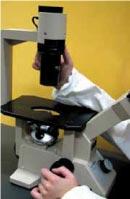Asbestos
Frequently asked questions for homeowners and the general public
Some common questions answered.
About asbestos
Asbestos is a naturally occurring mineral containing strong fibres that have excellent durability, fire resistance and insulating properties. However, if disturbed and fibres become airborne and are inhaled, it can pose a health risk.
You can't tell if a building material contains asbestos just by looking at it. Careful examination of a sample using specialised microscopic procedures can be completed at a NATA accredited laboratory to confirm whether a material contains asbestos.
As a general rule, if your home was built before 1990, it is likely to contain some asbestos materials. A knowledge of building products that contained asbestos can help to assume asbestos is present Asbestos was used in more than 3000 products and applications and it is estimated to be in one in three homes across Australia.
No. Since 31 December 2003, asbestos and all products containing asbestos have been banned throughout Australia. It is illegal to import, store, supply, sell, install, use or re-use these materials. The ban does not apply to asbestos previously installed (e.g. asbestos in houses).
You don't need to remove asbestos. If materials containing asbestos are in good condition (i.e. undamaged, undisturbed), the safest option is to leave them alone. The materials are not dangerous if undisturbed and sealed.
Before commencing your renovation, ask yourself or your tradesperson these questions:
- Can you avoid disturbing asbestos materials?
- How much asbestos material will you remove (<10 m2)?
- How will you or your tradesperson dispose of asbestos waste?
- How will you stop your exposure to fibres or that of your family or neighbours?
- Who will you use to do the job
- Are you aware of all the risks?
Health effects
What can happen if I am exposed to asbestos fibres?
Breathing in asbestos fibres has been linked to asbestos-related diseases, all of which can be fatal. Asbestos-related diseases have a latency period of up to 40-50 years before they make take effect.
Currently there are no cures for these diseases.
What is the likelihood of a person developing an asbestos-related illness?
The likelihood of any particular person developing an asbestos-related illness depends on a number of factors, including:
- duration and frequency of time a person is exposed to airborne asbestos fibres
- concentration or levels of asbestos in the air breathed
- individual susceptibility
- size and type of asbestos fibres
- other factors, such as cigarette smoke. (Research has shown that smoking significantly increases the risk of lung cancer in people who have been exposed to asbestos.)
What is asbestosis?
A chronic lung disease that can lead to respiratory impairment and to diseases such as lung cancer. Asbestosis causes widespread interstitial fibrosis (scar tissue between the alveoli, spread over the lung).
It is difficult to distinguish from other causes of interstitial fibrosis and only confirmation of exposure to asbestos or detection of unusually high numbers of asbestos fibres in the lung is considered conclusive evidence of this disease.
What is mesothelioma?
A cancer of the lining of the pleura (outer lung lining) or of the peritoneum (the lining of the abdominal cavity).
- It is a rare disease - incidence is 1 in every 100 000 for males and 0.3 in every 100 000 for females.
- Asbestos is not the only cause of this disease, but it is the most important cause in modern times.
- It is typically dose-related, but in rare cases has been known to occur in patients with little known occupational exposure to asbestos.
Testing for asbestos
Can I get materials tested for asbestos?
Yes. Laboratories that analyse building materials for asbestos can be found by contacting the National Association of Testing Authorities. The laboratory or an asbestos consultant can give you advice on how to correctly take and send a sample. There will be fees involved. Check online or use a telephone directory and search under 'asbestos'.
Image

Microscope for identifying asbestos (Image courtesy of Dept. of Human Services, Victoria)
Home renovation
What if I accidentally break asbestos?
If you accidentally break a material containing asbestos, the safest way to manage any health risks is to wipe up any dust with a damp cloth or paper towel, put the cloth/towel into two plastic bags, tie them up individually and put them in your rubbish bin.
If the material containing asbestos is cracked, you should seal the crack with a product like PVA glue or paint. If it is more significant damage, the entire sheet should be replaced and the old sheet disposed of correctly. Always follow safe work procedures when working with asbestos.
What if I need to put a hole in a bonded material containing asbestos?
If it is necessary to put a hole in a bonded material containing asbestos (e.g. for a chimney), it is safer to remove the whole sheet, replace it with non-asbestos sheeting (e.g. plywood, plasterboard, fibre cement sheeting) and cut the hole in the new sheeting. Laws and safe work procedures will need to be followed when removing the sheet.
I'm considering doing a renovation
Householders may carry out minor repairs on asbestos cement materials, as long as the recommended safety precautions for these activities are followed.
Never use power tools (such as power saws, drills, sanders and angle grinders) or high pressure water blasters on asbestos materials. Remember, if your asbestos product is loosely bound together or it easily crumbles under hand pressure (known as friable asbestos) you must use an A Class licensed removalist to complete any removal work.
What safety precautions do I need to take?
If you are carrying out maintenance such as painting or sealing on asbestos cement that will not release any fibres into the air, then take the usual precautions for these activities (such as working in a ventilated area).
However, if you plan to disturb asbestos materials by cutting, drilling or removal, it is important to take the proper precautions for handling asbestos to avoid risking your health or the health of your family. For further assistance, please call your local council or 13 QGOV (13 74 68).
Will I do my own renovation or get a licensed professional to help?
Home renovators and tradespeople have a legal responsibility to make sure they protect their own and others’ health by not releasing asbestos fibres during their work, or leaving behind asbestos dust after a task is completed. Before you disturb any building material you must check whether it is likely to contain asbestos (or assume it does). If it contains asbestos, you must also know how to avoid exposing yourself or others to airborne asbestos fibres.
How much asbestos material can I remove?
You can remove less than 10m
- P2 disposable mask or a half-face respirator
- disposable coveralls suitable to the task, for example, European Standards Type 5 and Type 6
- face and hand wipes
- boot covers or gumboots.
Read more information regarding wearing protective equipment.
You must package and dispose of the asbestos waste properly.
If more than 10m
When measuring the amount of asbestos to be removed, you need to consider the entire job, not each section of the job individually.
For example, if you plan to renovate the entire kitchen or bathroom, and the entire job requires the removal of about 50m
If, however you intend to remove 7m
You can measure the wall area by multiplying the length of the wall by its height.
What if I engage a tradie or other business operator to remove the asbestos from my house?
A tradesperson or other business operator removing 10m
A tradesperson or other business operator removing more than 10m
Any tradesperson or other business operator disturbing asbestos must use safe work procedures for the work they are contracted to carry out and these must comply with the Work Health and Safety Regulation 2011.
Are the by-products from my renovation on bonded asbestos considered friable?
By-products from any renovation work on bonded asbestos is not considered friable asbestos but associated asbestos wastes. These must be disposed of properly.
How do I or my tradesperson dispose of asbestos waste?
Contact your local regional council to find out whether you can dispose of asbestos as a domestic ratepayer or whether asbestos can only be disposed of through a licensed waste contractor. There are weight limitations for transporting asbestos waste and it must be contained by wrapping it in thick plastic.
How do I or my tradesperson stop my family or neighbours being exposed to asbestos fibres?
Using safe work procedures will help ensure asbestos fibres do not become airborne. In addition, you or your tradesperson will need to take precautions to capture any fibres, such as laying down plastic to capture any debris, wearing personal protective equipment and preventing people entering the work area. Clean up and decontamination will also need to be done safely to avoid spreading fibres.

- Home
- General information
- What is asbestos?
- How was asbestos used?
- Are there health effects?
- The risks of exposure
- Health monitoring
- Legislation and codes of practice
- Low density asbestos fibre board
- Asbestos contaminated dust or debris
- Fires
- Cleaning up after floods and storms
- Importation prohibited
- Government and agency roles
- Asbestos in government assets
- Know where asbestos is
- Removing or disturbing asbestos
- Practical guidance
- Resources
- Asbestos alerts
- Asbestos news
- Codes of practice
- Guidance
- Films
- Asbestos safety session 2021
- Asbestos safety session 2020
- Cleaning Asbestos Roofs
- Shadow vacuuming with a H-Class vacuum cleaner
- Use and maintenance of a H-Class vacuum cleaner
- Identifying low density asbestos fibre board hazards and risks
- Working safely with asbestos for the home renovator
- How to properly wear personal protective equipment for airborne contaminants
- Personal protective equipment
- Dear Dad - An asbestos awareness film
- Clear and present danger: Asbestos exposed
- Uses and applications of asbestos - an extract from a film by Parsons Brinckerhoff
- Asbestos health issues - an extract from a film by Parsons Brinckerhoff
- Safe work procedure - storm and wind damage cleanup
- Drilling into asbestos walls and ceilings
- Asbestos - Removing switchboard panels
- Decontamination procedure, personal decontamination and cleanup procedures
- Asbestos awareness
- Safe work procedures
- Preparation before commencing the task
- Preparing and painting corrugated asbestos cement roof and fences
- Drilling into non-friable asbestos using a thickened substance to control airborne fibres and dust
- Drilling into non-friable ACM using an H rated industrial HEPA filter vacuum to control airborne fibres and dust
- Removing a small package electrical switchboard
- Cleanup and disposal
- Safe cleanup of storm damaged materials that may contain asbestos
- Frequently asked questions for homeowners and the general public
- Podcasts
- Strategies
- Working Safely with Asbestos Guide
- Asbestos awareness week 2025
- Asbestos management compliance campaign
- Induction and safety training for unlicensed work
- Sanctions